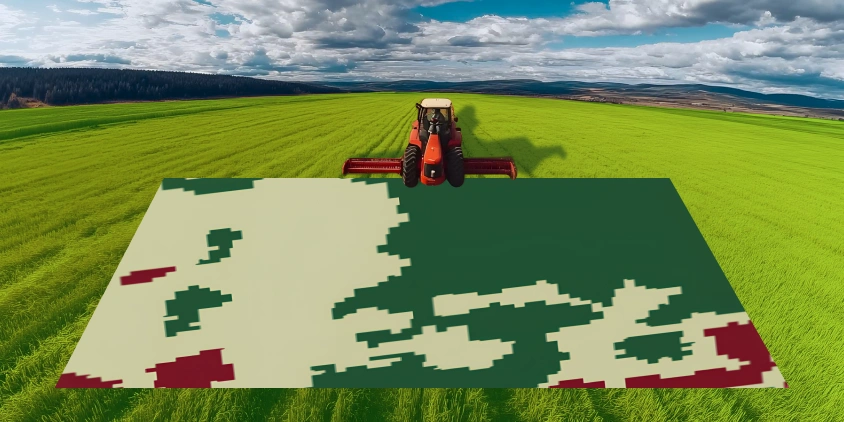
Variable Rate Technology: What Is This And How It Works
Imagine applying any agricultural inputs with pinpoint accuracy — only where, when, and how much is needed. That’s the promise of variable rate technology in agriculture. This smart strategy employs real-time data collection, advanced mapping techniques, and automated application systems to optimize every aspect of crop production. Variable rate technology enables sowing the right amount of seeds in each area according to its germination potential, herbicide application based on weed infestation severity, adjusted irrigation to suit plant needs and field topography, and fertilization in different zones according to specific crop needs and potential yield. And the outcome — higher field productivity at a lower cost — will not be long in coming.
What Is Variable Rate Technology And Its Role In Precision Agriculture?
Variable rate technology (VRT) is a technological method, one of the pillars of precision agriculture, in which farmers vary the application rates of inputs to maximize crop output and minimize resource waste. Targeted and precise application through VRT also reduces negative environmental impact compared to uniform application across an entire field.
Remote sensing-driven variable rate technology is the most practical and easy-to-use option for farms of any size. Here, by analyzing factors like soil quality and past yields, VRT identifies field zones that require more or less inputs such as fertilizers, pesticides, and water and generates prescription maps. Farmers can program their equipment to automatically adjust application rates in each zone according to these GIS maps. Since technical improvements make VRT systems more accessible, they are becoming increasingly popular as a simple and dependable solution to maintain high agricultural productivity over time.
How Does Variable Rate Technology Work?
Using either GPS-guided prescription maps or real-time sensors, variable input technology turns agricultural fields into a patchwork of optimized zones, each receiving exactly what it needs to thrive. Here are two basic methods of variable rate technology:
- Map-based variable rate technology makes use of preliminary generated prescription maps, or scripts. These scripts are uploaded into the farm management systems or directly to agricultural machinery, which supports VRT, to guide it in applying inputs at variable rates according to specific GPS coordinates. The map-based variable input technology allows for highly targeted applications by factoring in data from multiple sources .
- Sensor-based variable rate technology, conversely, relies on real-time data collection to inform application rates. This technology shines in irrigation, particularly with center pivot systems, allowing farmers to respond instantly to current soil moisture, air temperature, and other field conditions.
Both technologies, when used appropriately, assist commercial growers and other agricultural players in maximizing efficiency and crop yields by precisely delivering inputs where and when they’re required.
Benefits Of Adopting Variable Rate Technology
By tailoring input distribution to specific field zones, variable rate technology boosts crop yields and preserves soil health. This technology also enhances the traceability of crop production and minimizes environmental impact, fostering more sustainable farming practices.
Higher Yield Quality And Quantity
Adopting variable rate technology at any stage of the cultivation process can improve crop productivity and yield quality. Specifically, differentiated seeding improves crop emergence rate and uniformity; precision irrigation provides necessary moisture without the risk of fungal diseases and root rot caused by overwetting; and VRT fertilizing delivers essential nutrients precisely where needed, preventing fertilizer burn. All of these variable input technology effects help crops flourish and reach their full potential.
Enhanced Crop Production Traceability
By digitizing field data, VRT allows agriculture players to track every single input applied to their crops, from seeds to fertilizers and pesticides. This traceability is crucial for answering questions about field history, planning agricultural operations, and ensuring compliance with industry standards. Using VRT systems integrated into crop management software, input suppliers can gain insights into the performance of their products in various field conditions. Growers can efficiently monitor and document each stage of crop production with variable rate technology to overview their farming strategy whenever needed.
Soil Health Conservation
Outdated farming technology and improper practices have disastrous effects on soil health, from messing up the soil’s pH balance by dumping too much fertilizer on it to compacting the ground by driving heavy machinery multiple times while applying inputs. Luckily, precision agriculture, and particularly variable rate technology, can minimize soil degradation. Using this technology, crop producers can maintain the optimal pH of the soil, preserve its structure, promote beneficial microbial activity, and ultimately conserve the overall quality of our soils.
More Environmentally Friendly Crop Production
Thanks to variable rate technology, crop producers apply exactly the right amount of water and chemicals, which means farming has a less harmful impact on the environment. Less nitrogen dioxide from fertilizers released into the atmosphere, less salinity of irrigated soils, less pesticide and herbicide accumulation and leakage — and these are just a few of the most apparent outcomes of using variable rate technology.
Beyond chemical reduction, VRT optimizes field operations, reducing the need for multiple passes by farm equipment. This translates to fewer carbon emissions from fuel-hungry tractors and other machines. Thus, farmers who embrace variable rate technology not only benefit their businesses but also actively contribute to a greener, more sustainable agricultural sector.
EOSDA Crop Monitoring Capabilities To Support Variable Rate Technology Agriculture
We, at EOSDA, know how farm owners struggle to find out what their crops need and in what exact amount. EOSDA Crop Monitoring helps solve this problem by informing different variable rate applications. We use satellite images, farm machinery-generated ground data files, and our dedicated algorithms to show farmers where to plant more seeds, which areas are on the verge of water stress, where weeds are causing trouble, and which parts of the field require extra nutrients.
Variable Rate Seeding Technology
In variable rate planting technology, each piece of planting equipment guided by scripts or sensors knows exactly how many seeds to put in which part of the field. For example, you’ll plant more densely in the richest soils, which have plenty of resources for more plants, and less densely in poorer soils, so that your plants don’t compete for resources.
With our crop monitoring technology, creating a variable rate planting script is simple. Choose a preferred period for analysis and select the level of detail (number of defined field zones) you need. The system automatically selects cloudless satellite imagery for the set timeframe (since 2016 at the earliest) and uses this data to provide NDVI insights. The resulting field segmentation will show you exactly where to increase or decrease planting density for optimal results.
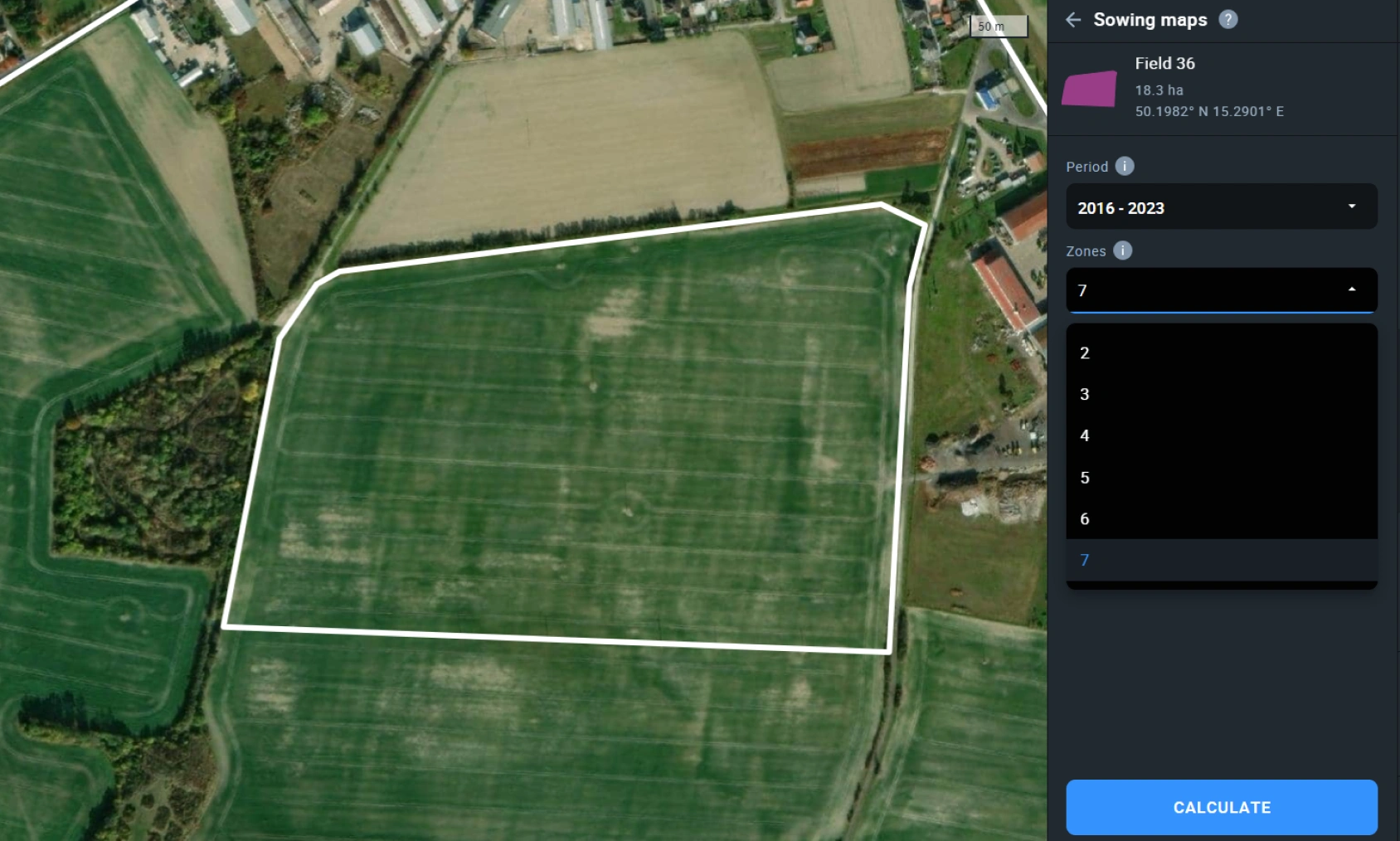
When you’re ready to put your VRT plan into action, EOSDA Crop Monitoring integrates with your farming machinery. Export your custom seeding scripts in ISO-XML or SHP formats, compatible with popular brands like Trimble, Amazone, and John Deere.

Variable Rate Fertilizer Technology
Fields are not uniform in nutrient availability, so one size doesn’t fit all in fertilizing. Variable rate technology in fertilizer applications recognizes this. By leveraging soil testing and/or satellite imagery and topography data, commercial variable rate technology systems allow farmers to tailor fertilizer applications across different field zones. The result? More efficient input use, higher ROI (return on investment), and reduced risk of overfertilization and its associated problems (soil acidification/alkalinization, leaching, air and water pollution, etc.)
EOSDA Crop Monitoring brings tried and tested variable rate technology to your fingertips with our advanced VRA scripts. For optimal nitrogen application, try out our Nitrogen VRA maps. Applying specified vegetation indices to recent satellite imagery, the algorithm quickly and precisely identifies areas of dense and sparse vegetation, typical indicators of varying nitrogen needs. In just seconds, you’ll have a clear picture of your field’s nutrient distribution to adjust fertilizer amounts accordingly.
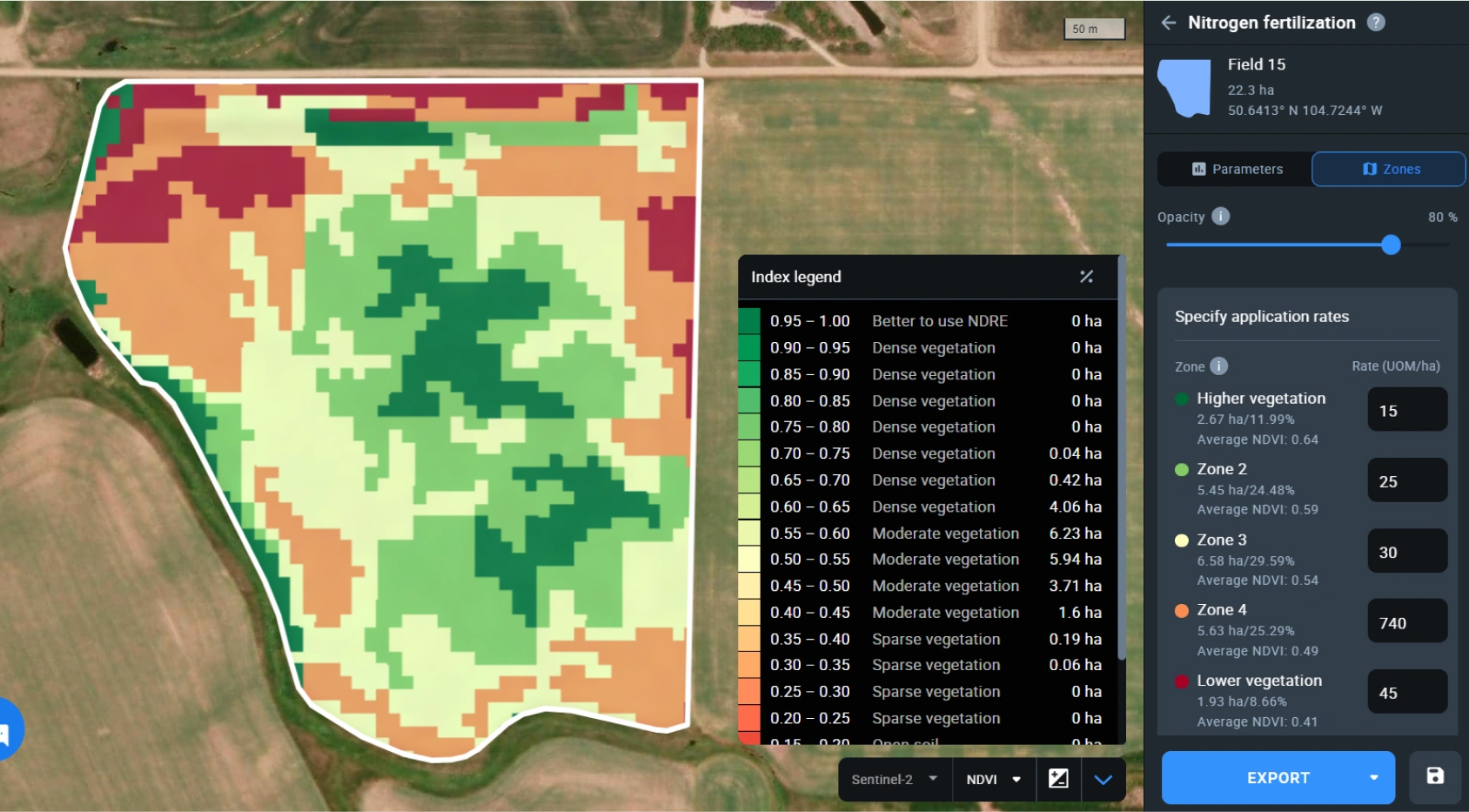
Our variable rate technology solution for precision farming also extends to phosphorous and potassium, two other essential nutrients. The P&K VRA maps use historical productivity data to identify field zones for precise phosphorus and potassium fertilization based on long-term productivity trends. By targeting proven productive zones with optimized phosphorous and potassium applications, you’ll support your field’s top performers and potentially boost overall field productivity.

Variable rate technology enables precise nutrient application using either spreaders or sprayers. Download EOSDA Crop Monitoring’s prescription maps, which integrate seamlessly with major agricultural machinery brands, to enhance the fertilization process.
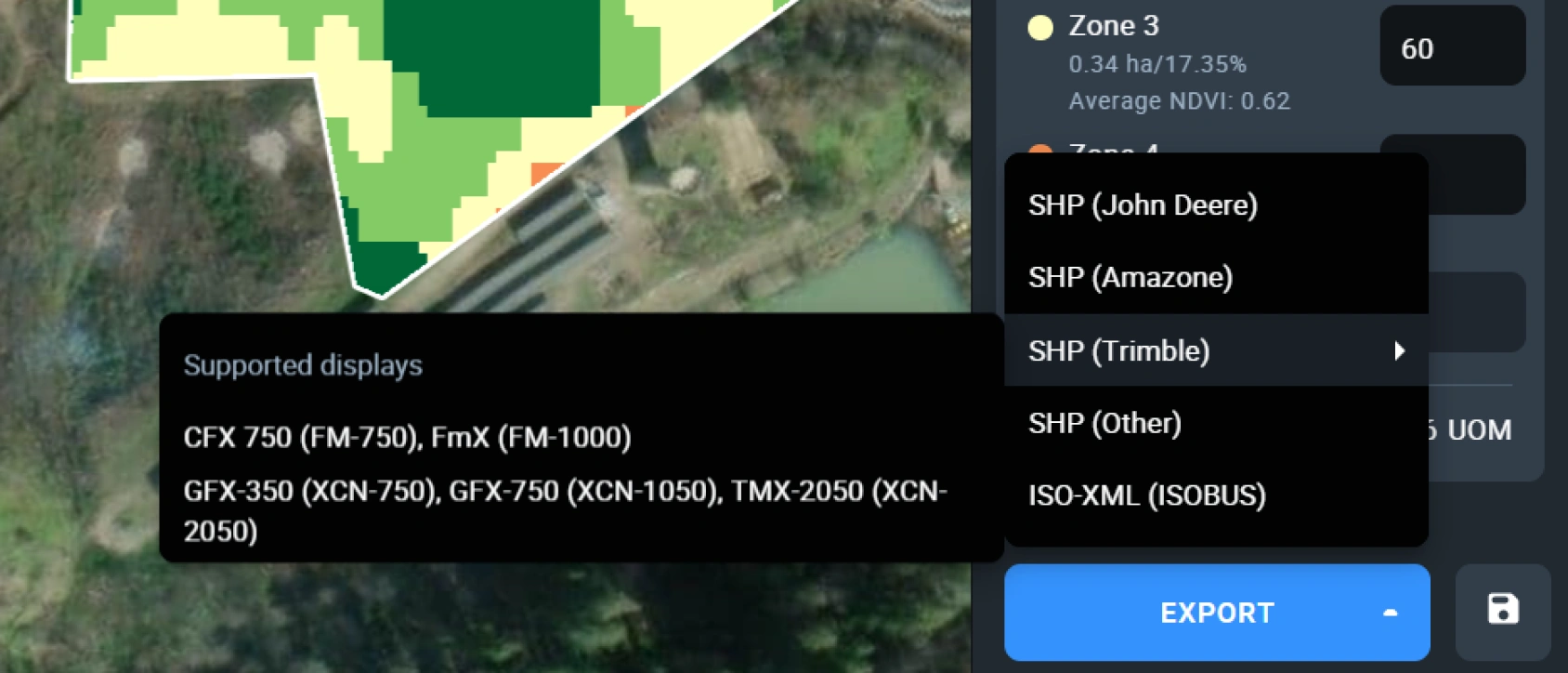
Variable Rate Technology For Weed Control
Traditional uniform herbicide application often results in injured crops, unnecessary costs, and environmental harm. Variable rate technology offers a smarter solution for farmers to precisely target areas with weed pressure: protect crops in need, save money, and benefit the ecosystem. Pre-emergent variable rate herbicide application relies on map-based VRT systems that use zone-specific weed infestation data from the past. Post-emergent VRT weed control leverages current airborne or satellite imagery to identify weed-infested areas throughout the growing season.
EOSDA Crop Monitoring’s Map builder greatly supports post-emergent variable rate weed control, which is particularly important early in the growing season. Imagine that you need to protect a newly sown sunflower field from weeds. Here’s how you can do this using the Map builder:
- The algorithm identifies areas with more and less intense weed growth by assessing parameters such as MSAVI, NDVI, and 3 other vegetation indices.
- Once it has been determined that the area is impacted by weeds, set VRT rates for different areas: more in heavily infested ones and less where the sunflower canopy is already suppressing weeds on its own.
- Finally, export the VRT map and download it to your pest control equipment to get the most out of pesticide applications.
You can use Map builder’s integral vegetation indices or upload farm equipment-generated files to segment the field based on the most applicable parameter.
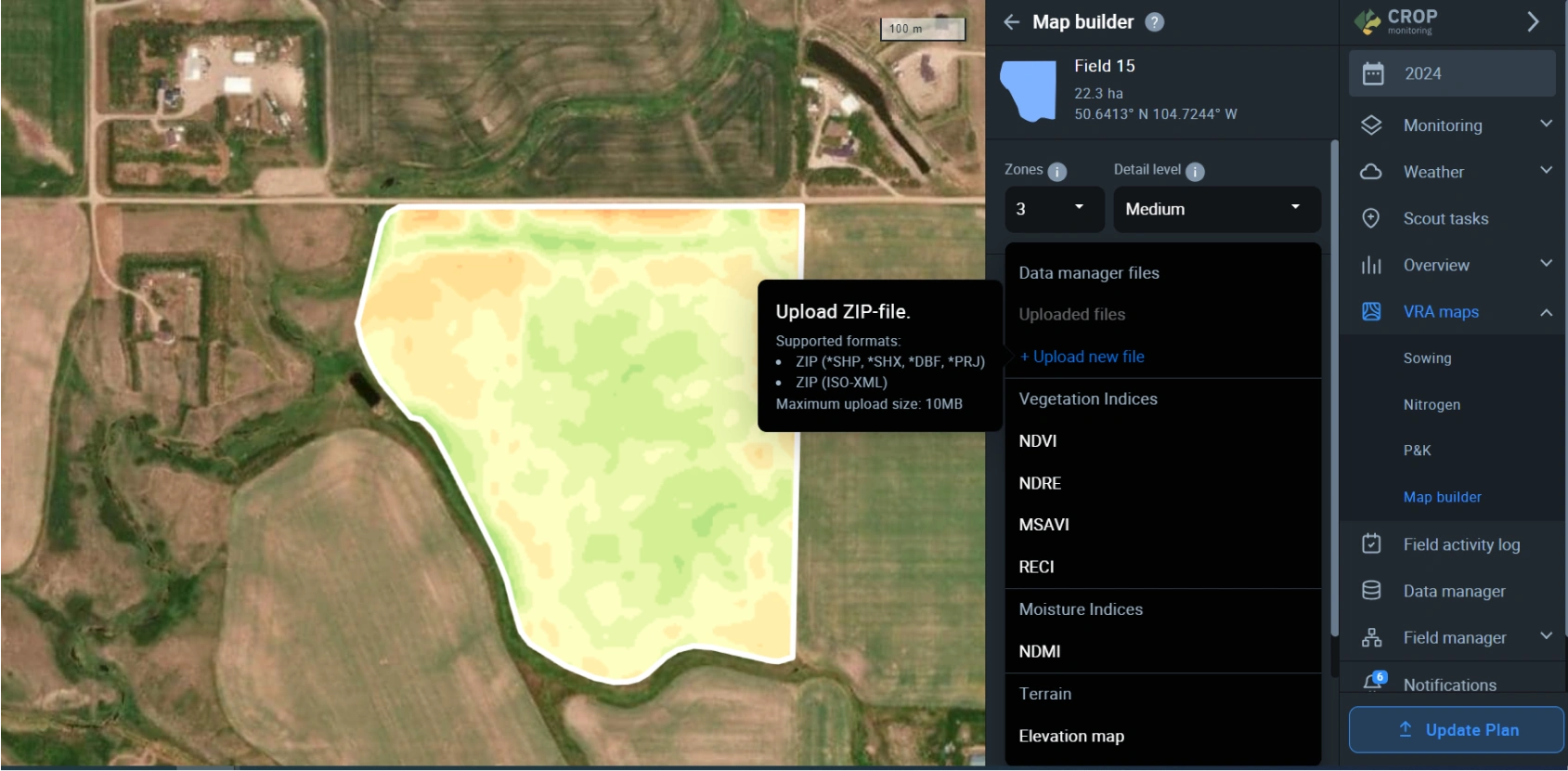
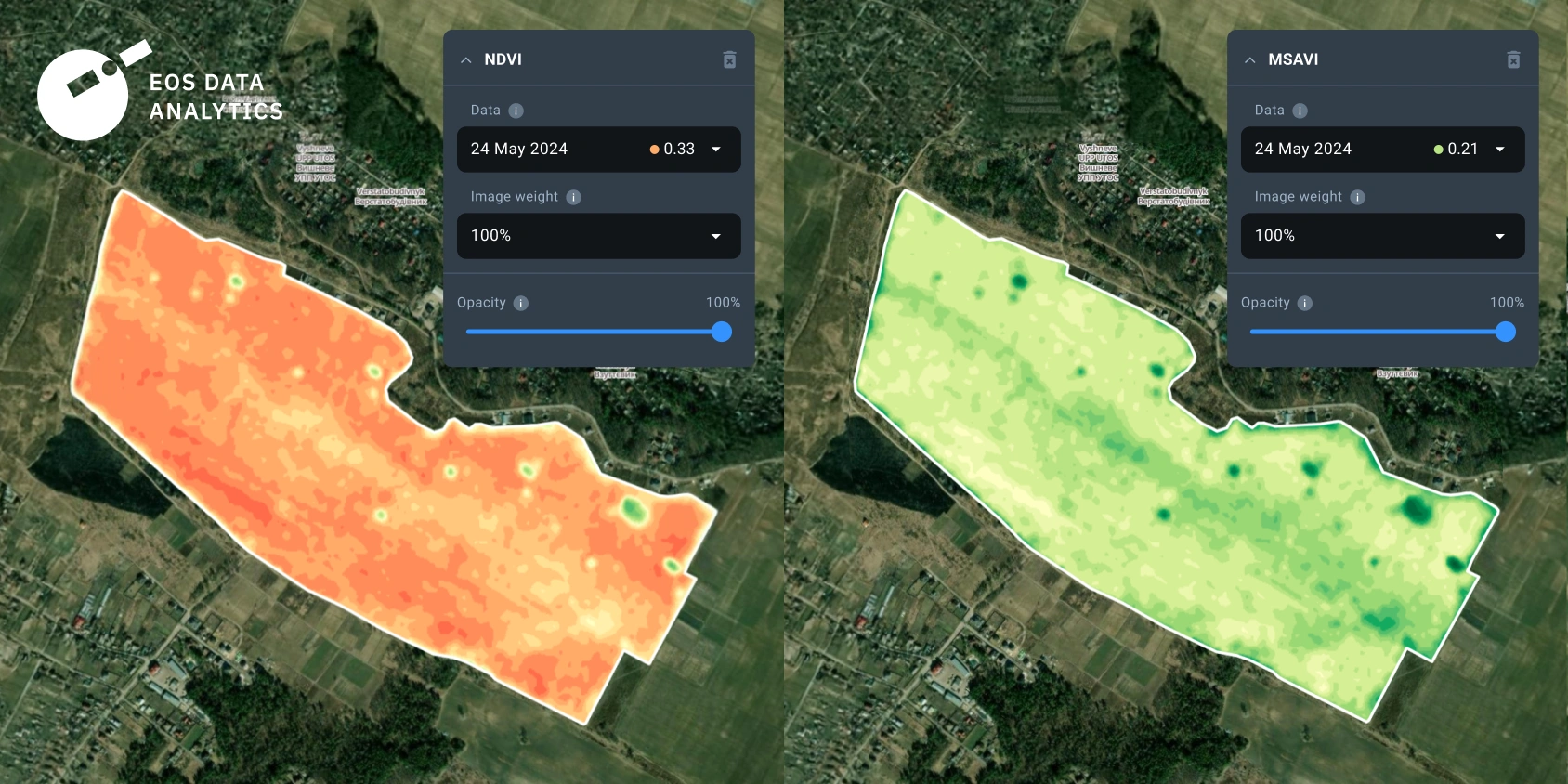
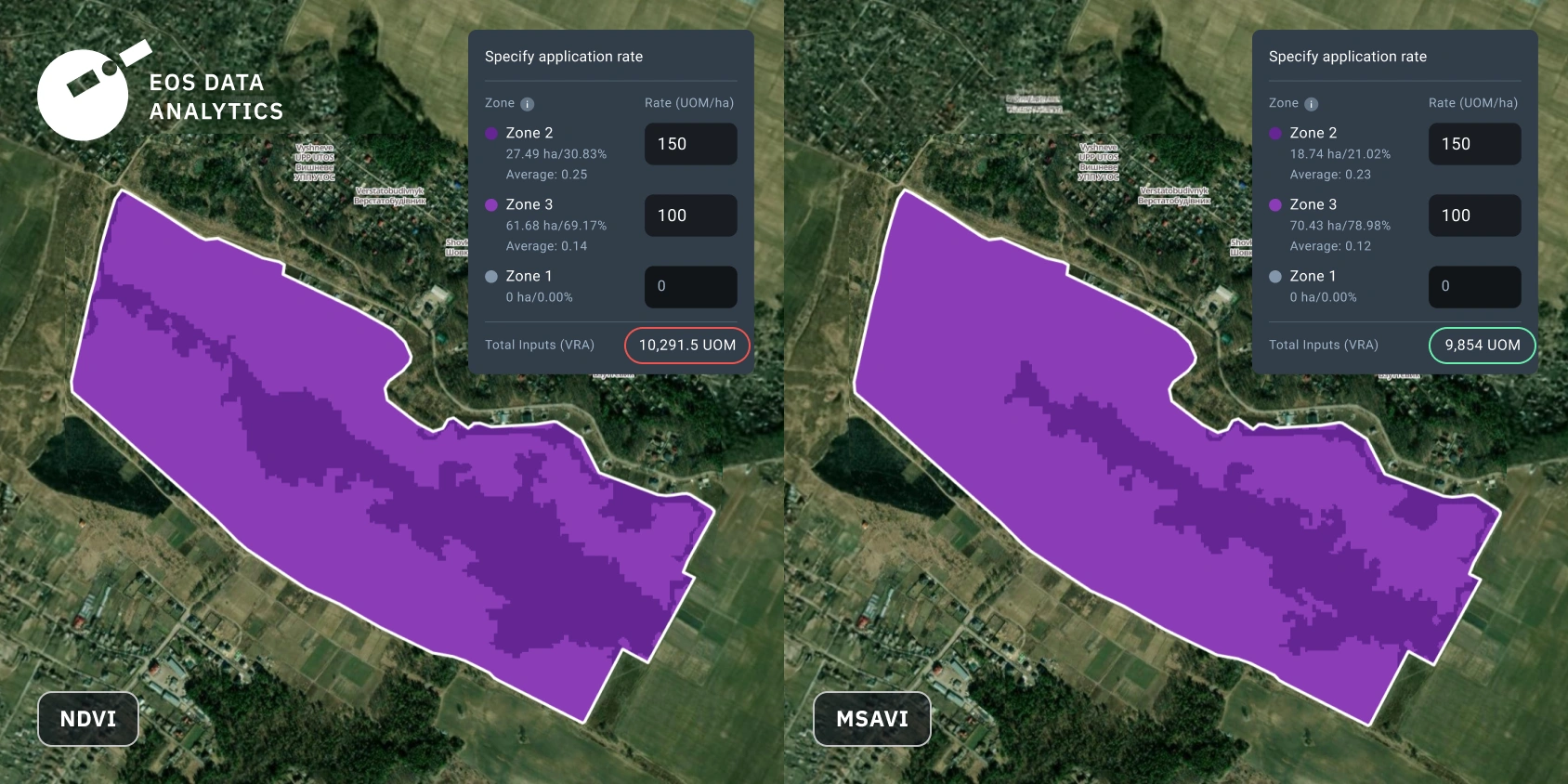
Variable Rate Irrigation Technology
Irrigation based on variable rate technology, commercially available since the early 2000s and first embraced exclusively by large-scale industrial farms, is now becoming more affordable, practical, and widely used on farms of all sizes . Although variable rate technology is typically applied in center pivot (circle) irrigation, it is also used in sprinkler and drip irrigation systems. Variable rate irrigation systems use recent data from remote sensing, ground sensors, and weather stations to automatically adjust water application across different field areas. By precisely matching irrigation to plant needs and topographic conditions, variable rate technology helps reduce water runoff, save energy, and reduce soil erosion.
EOSDA Crop Monitoring offers two key features to optimize your VRT irrigation strategy: NDMI and elevation maps. The NDMI (Normalized Difference Moisture Index) maps show how much water the plants already have. By selecting this index in the Map builder, you can generate VRI scripts tailored to your field. In most cases, wetter areas (with higher NDMI values) should receive less water, while drier areas (with lower NDMI) should receive more. This way, you’ll not only save water compared to uniform watering but also avoid crop stress from both under- and overwatering.
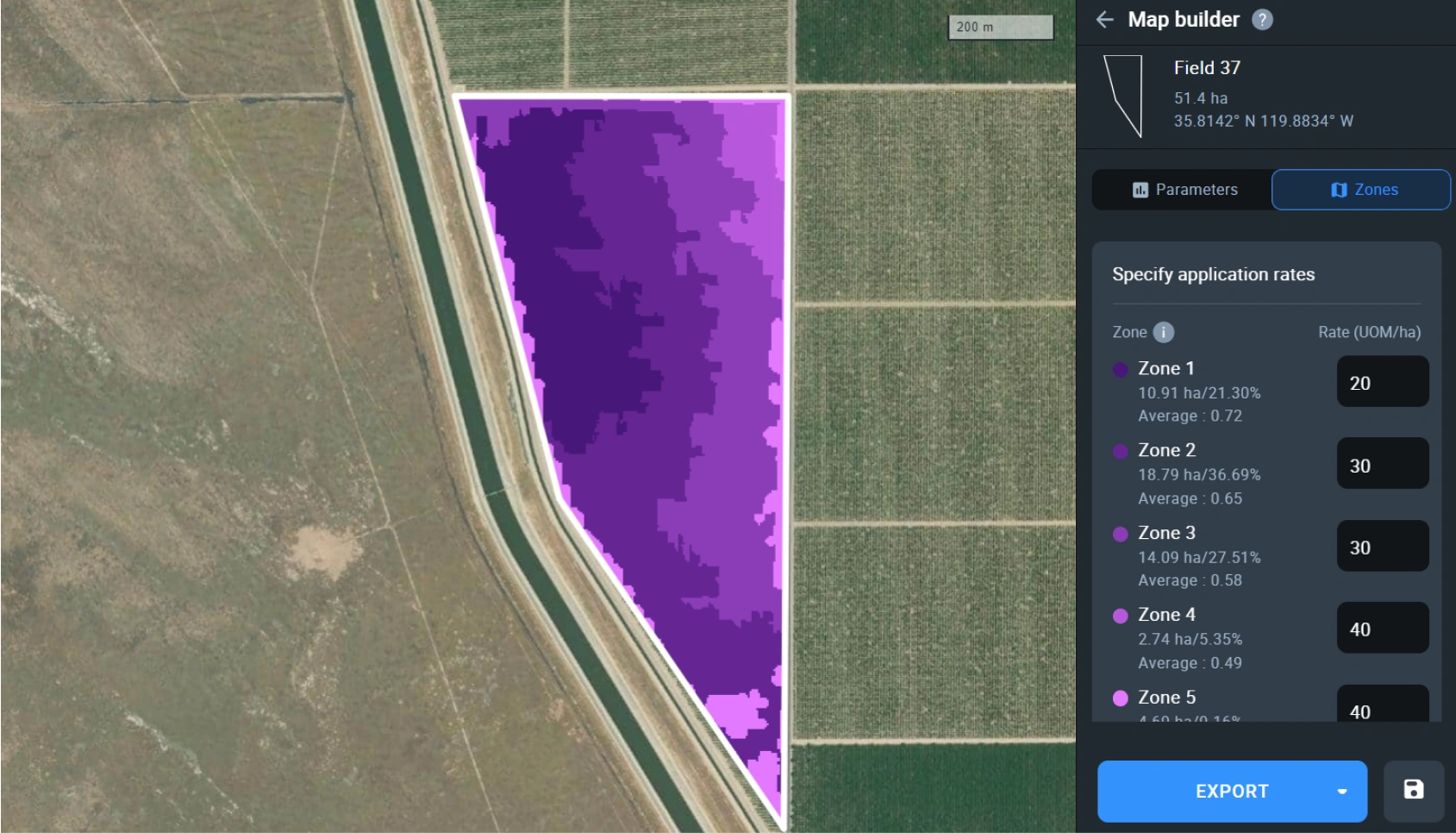
Elevation visualization in Map builder adds another layer of precision to your irrigation planning. With your fields’ topography visualized you can adjust irrigation rates based on elevation, ensuring that higher areas receive adequate water while preventing waterlogging in low-lying areas. The result is more uniform crop growth and improved overall field health.
Are Variable Rate Technologies Worth The Cost?
The value of variable rate technologies extends beyond simply increasing productivity. However, its long-term benefits, such as enhanced soil health and environmental impact, are difficult to evaluate in terms of what farmers are most concerned with: “To invest or not to invest?”. The truth is that VRT’s worth depends largely on field variability and crop production specifics. For uniform fields, the impact may be minimal, but farms with significant variability, as is often seen in reality, will greatly benefit from variable rate technology.
To figure out if VRT is worthwhile for your farm, look at how much your fields vary and where you can cut costs. Ask yourself, for instance, “If I could save 10% on fertilizer for one-third of my land without reducing yields, would variable rate technology be worth the cost?”. Modern farm management tools, such as EOSDA Crop Monitoring have made the technology more affordable, easy-to-use, and accurate. Investing in variable input technology today might help both your wallet and the environment tomorrow, so it’s definitely worth considering.
About the author:
Kateryna Sergieieva has a Ph.D. in information technologies and 15 years of experience in remote sensing. She is a Senior Scientist at EOSDA responsible for developing technologies for satellite monitoring and surface feature change detection. Kateryna is an author of over 60 scientific publications.
Recent articles
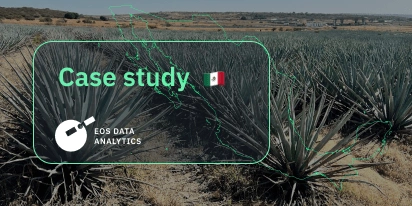
Digital Tools Improve Soil Health And Yields In Mexico
EOSDA and ITTA supported a Guanajuato farm with contour-line planning, monitoring tools, and practical guidance to reduce soil erosion and improve yields in the long run.

Analyze 2025 & Plan Your Best Year Yet: LandViewer Christmas Offer
It’s the most wonderful time of the year! The Christmas holidays are here, and so is your chance to analyze 2025 and plan a prosperous 2026 with more affordable Pro plans in LandViewer.
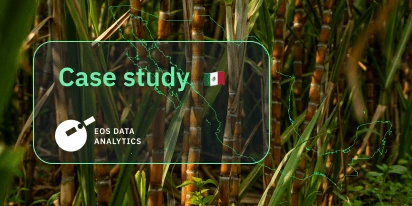
EOSDA Models Climate Change Impact On Sugarcane Yields
EOSDA modeled future temperature, rainfall, and other climate impacts on Veracruz sugarcane. The results help growers plan long-term adaptation strategies, including timing, varieties, and irrigation.